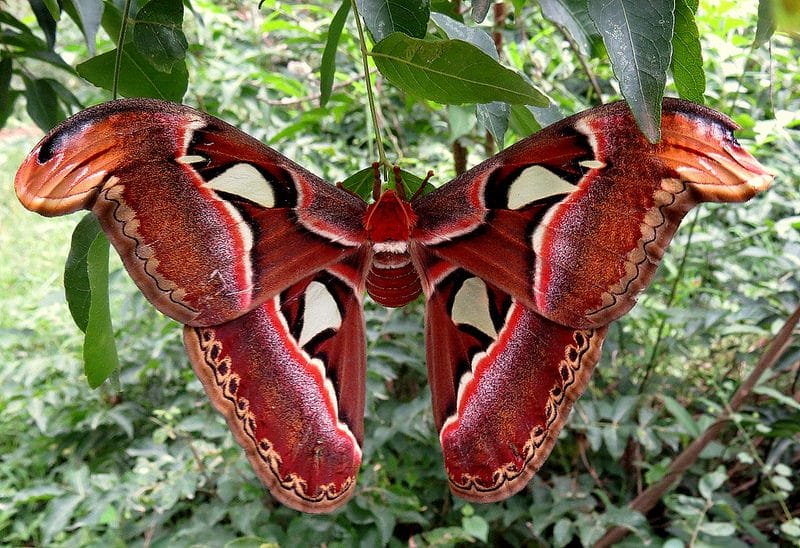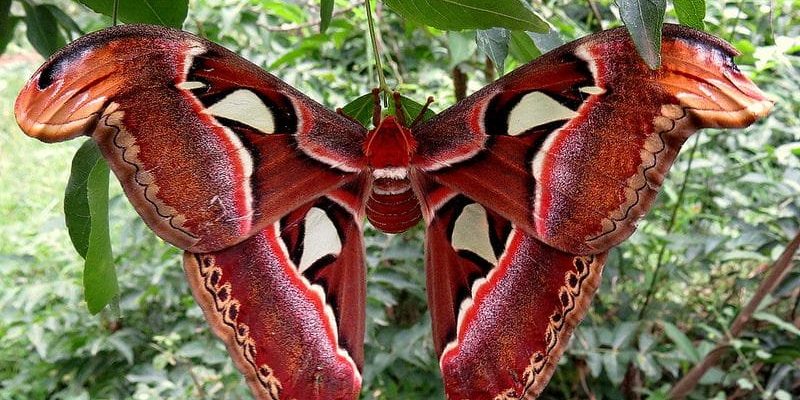
You might be wondering how a moth, especially one as big as the Atlas Moth, can fit into the pollination conversation. Well, here’s the thing: while bees often steal the spotlight, night-flying insects like the Atlas Moth are busy working their magic in the shadows. Like a stealthy magician, they pollinate flowers while more traditional pollinators sleep—making them vital to the environment. So, grab a cup of coffee, and let’s explore the various jobs performed by this winged giant.
The Anatomy of an Atlas Moth
To appreciate the Atlas Moth, it helps to understand what makes it unique. One glance at its enormous wings and you’ll see intricate patterns and colors, which often mimic the appearance of snake heads. This clever design serves as a form of camouflage, helping the moth avoid predators.
Also, the wings aren’t just for show. They can cover the moth’s body when resting, making it nearly impossible to spot. Interestingly, the Atlas Moth has no mouthparts in its adult life. It doesn’t feed, relying on energy stored during its larval stage. This means its primary focus as an adult is to find mates and pollinate flowers.
Atlas Moth and Pollination
Here’s a fun fact: pollination isn’t just for flowers that bloom during the day. Many plants have evolved to attract nighttime pollinators like the Atlas Moth. The moth is particularly drawn to large white and pastel flowers that emit heavy fragrances. When it visits these blooms, it brushes against the male and female reproductive parts of the plant, transferring pollen as it goes.
But why does this matter? Well, almost 75% of flowering plants depend on insects for pollination. By helping these plants reproduce, the Atlas Moth indirectly supports entire ecosystems. It’s like being the unsung hero of nature—a role that can often get overlooked.
The Lifecycle of an Atlas Moth
The life of an Atlas Moth begins as an egg, often laid on the leaves of specific host plants. Once hatched, the caterpillars (or larvae) are voracious eaters, consuming large amounts of foliage. This feeding phase is crucial, as it helps them store energy for their adult lives.
Once they’re sufficiently grown, they spin a cocoon and enter the pupal stage. This is where the magic happens. Inside the chrysalis, they undergo a complete transformation before emerging as adult moths. This change is a reminder of how growth often comes from time spent in a protective space, a little like us humans taking the time we need to grow and develop.
Other Roles Beyond Pollination
While pollination is a significant contribution, the Atlas Moth has other roles in the ecosystem, too. For starters, they serve as prey for various predators, including birds and bats. By being part of the food chain, they help maintain ecological balance. It’s a classic case of “you scratch my back, I’ll scratch yours.”
Additionally, the larvae of the Atlas Moth are a food source for local birds and even some human communities. Their presence contributes to biodiversity, strengthening the health of the ecosystem. It’s a reminder that every creature, no matter how small or large, has its part to play.
Habitat and Distribution
The Atlas Moth primarily lives in tropical rainforests across Southeast Asia, including countries like Malaysia, Indonesia, and parts of Thailand. Their habitat is crucial for their survival, as they thrive in areas with abundant foliage for their larvae.
As urban development encroaches on these natural habitats, the Atlas Moth faces challenges. Fewer trees mean less food for the larvae, which can impact their populations. Conservation efforts are essential to ensure that these magnificent moths continue to grace our planet and fulfill their ecological roles.
The Importance of Conservation
With the Atlas Moth’s striking beauty and vital role in ecosystems, conservation becomes paramount. Habitat loss due to deforestation and climate change threatens not only the moth but also the countless species that depend on the same environment.
Education and awareness initiatives can help protect their habitats. For instance, promoting sustainable practices can encourage local communities to preserve forests instead of clearing them. It’s about creating a future where the Atlas Moth can thrive, alongside all the plants and animals that benefit from its presence.
The Fascination of the Atlas Moth
From its breathtaking wingspan to its role in pollination, the Atlas Moth is more than just an insect—it’s a marvel of nature. Understanding its lifecycle and contributions helps us appreciate the interconnectedness of life.
As we continue to learn about these amazing creatures, it’s essential to foster a sense of stewardship toward the environment. After all, if we want future generations to witness the beauty of the Atlas Moth, we need to take action today.
In conclusion, the Atlas Moth is a stellar example of nature’s diversity and the critical roles creatures play in our ecosystems. Whether it’s through pollination or serving as a vital food source, this moth has earned its place in the spotlight. Let’s celebrate and protect these magnificent beings and the intricate webs of life they support.

